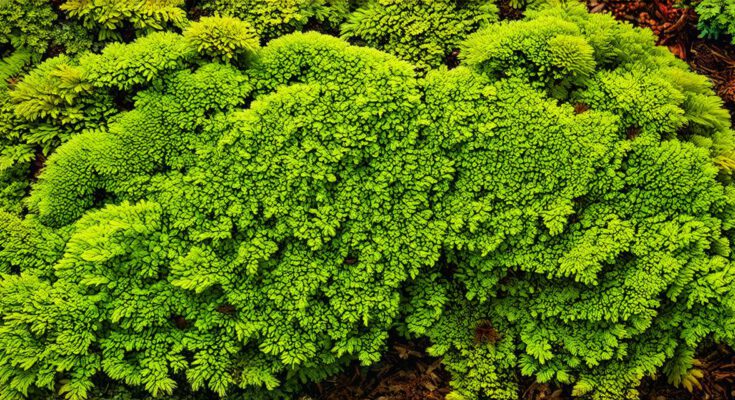<!DOCTYPE html>
Anatomy of Cryptogams
Cryptogams are characterized by their lack of true leaves, meaning that they do not possess specialized structures for photosynthesis. Instead, they rely on other methods to obtain nutrients.
One such method is through the process of lichens, where cryptogams form a mutualistic relationship with fungi to obtain food and water. Another way in which cryptogams obtain nutrients is through mycorrhizal associations with fungi, where the fungal partner helps the plant absorb water and nutrients from the soil while receiving sugars in return.
Cryptogams can be classified into two main groups: mosses and liverworts. Mosses are characterized by their small, green leaves and lack of specialized structures for spore production, while liverworts are distinguished by their large, flat leaves that resemble those of plants.
Cryptogams also have a unique structure called a protonema, which is an extension of the stem or leaf axis that produces new shoots and roots.
Physiology of Cryptogams
One of the most important features of cryptogams is their ability to photosynthesize without specialized structures for it. This is achieved through the process of chloroplast endosymbiosis, whereby algae are taken up by cryptogam cells and used as a source of chlorophyll and other pigments that enable photosynthesis.
Cryptogams can also obtain nutrients from their environment through chemosynthesis, which is the conversion of chemical energy into organic compounds by certain organisms.
Cryptogams are adapted to living in a variety of environments, including wetlands, forests, and even the deep sea. They are able to withstand harsh conditions such as extreme temperatures, high radiation levels, and acidic or basic environments. This is achieved through a number of adaptations, including specialized structures for water retention and the production of protective compounds.
Classification of Cryptogams
Cryptogams are classified into two main groups: mosses and liverworts. Mosses are further divided into three classes: hornworts, bryids, and massonids.
Hornworts are characterized by their elongated leaves and lack of specialized structures for spore production, while bryids have a more diverse range of leaf shapes and sizes. Massonids are the most diverse group of mosses and include species with specialized structures for photosynthesis and other functions.
Liverworts are further divided into two classes: hornworts and non-hornworts. Hornworts have large, flat leaves that resemble those of plants and produce spores in specialized structures called archegonia. Non-hornworts lack these specialized structures and instead produce spores in specialized cells within the leaf tissue.
Importance of Cryptogams in Ecosystems
Cryptogams play a vital role in ecosystems, serving as primary producers that convert carbon dioxide into organic matter through photosynthesis. They also provide important habitats for other organisms, including insects, fungi, and small animals.
The decomposition of cryptogam material contributes to soil formation and nutrient cycling, while their ability to tolerate harsh conditions makes them an important part of the ecosystem in a wide range of environments.
Conclusion
Cryptogams are fascinating organisms that have much to teach us about the diversity of life on Earth. With their unique features and functions, they continue to be studied and understood by scientists and nature enthusiasts alike. From their role in photosynthesis to their adaptations to extreme environments, cryptogams offer a wealth of knowledge about how life thrives under challenging conditions.
FAQs
What is the difference between mosses and liverworts?
Mosses are characterized by their small, green leaves and lack of specialized structures for spore production, while liverworts are distinguished by their large, flat leaves that resemble those of plants.
How do cryptogams obtain nutrients without true leaves?
Cryptogams rely on other methods to obtain nutrients, such as through the process of lichens or mycorrhizal associations with fungi.
What is chloroplast endosymbiosis?
Chloroplast endosymbiosis is a process in which algae are taken up by cryptogam cells and used as a source of chlorophyll and other pigments that enable photosynthesis.
What role do cryptogams play in ecosystems?
Cryptogams play a vital role in ecosystems, serving as primary producers that convert carbon dioxide into organic matter through photosynthesis. They also provide important habitats for other organisms and contribute to soil formation and nutrient cycling.
What adaptations do cryptogams have to extreme environments?
Cryptogams are adapted to living in a variety of environments, including harsh conditions such as extreme temperatures, high radiation levels, and acidic or basic environments. They are able to withstand these conditions through specialized structures and the production of protective compounds.



